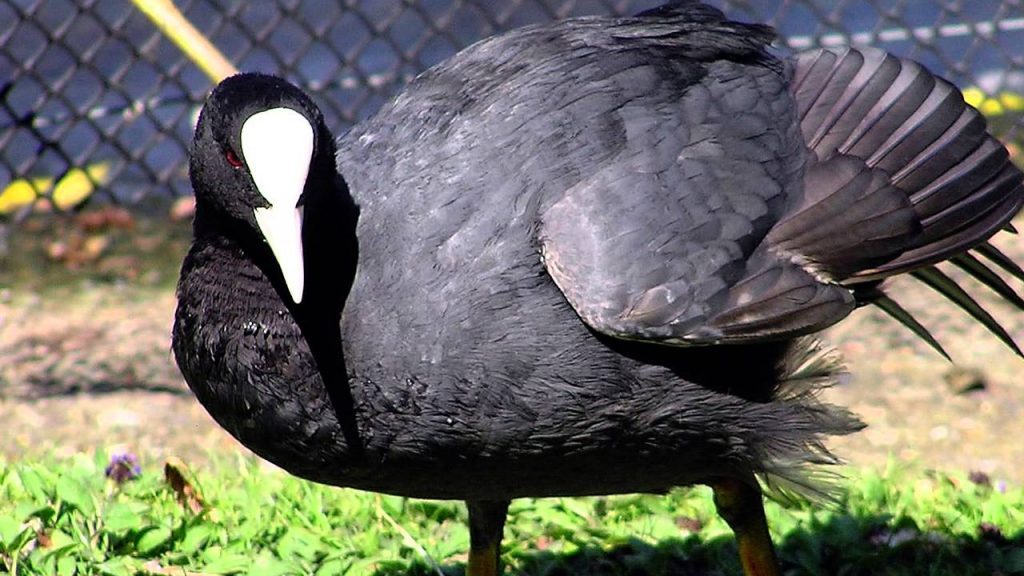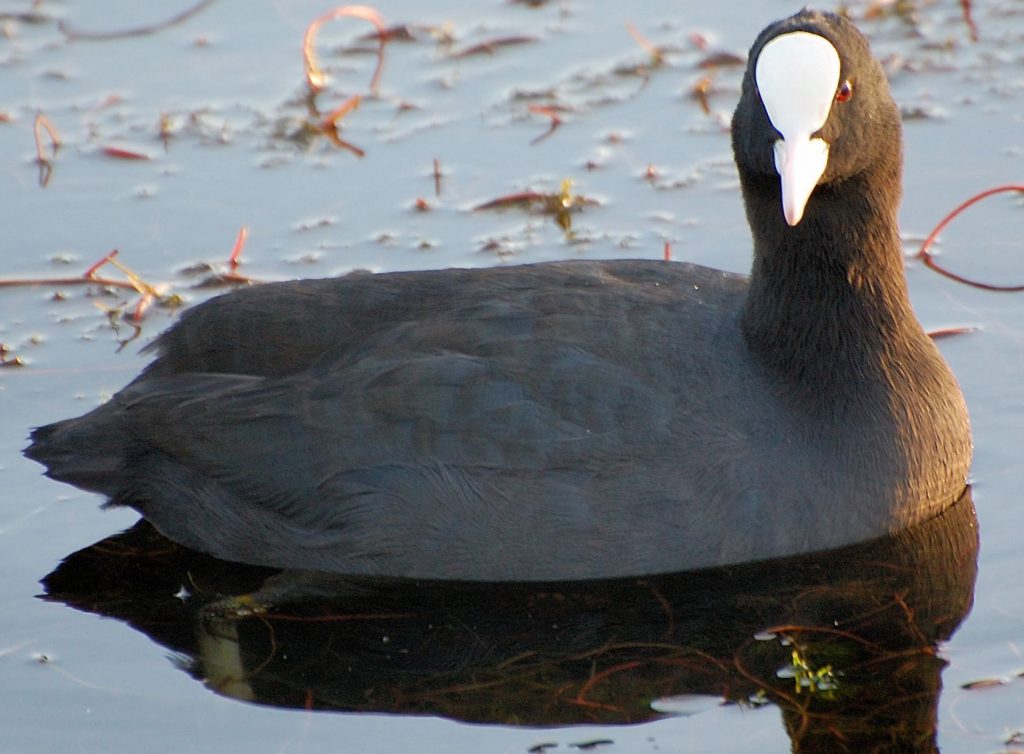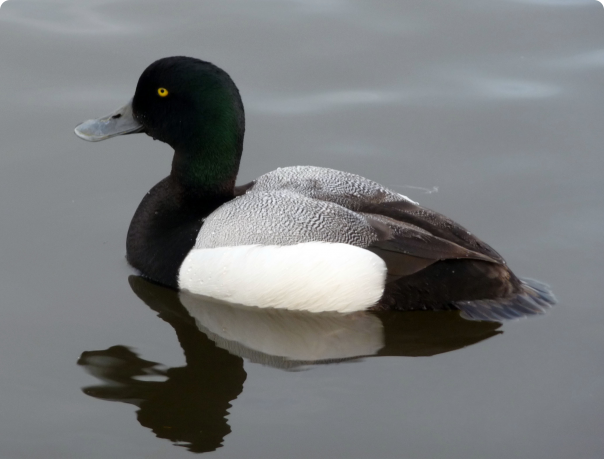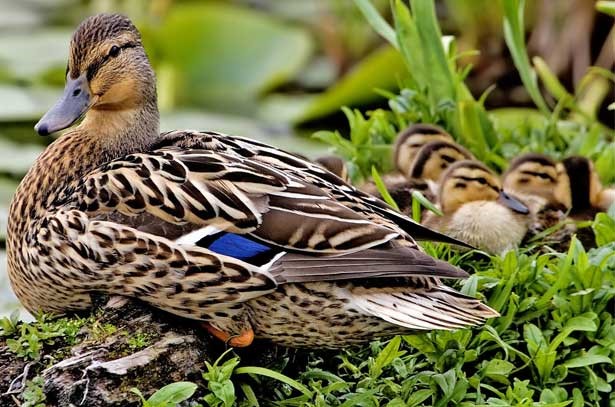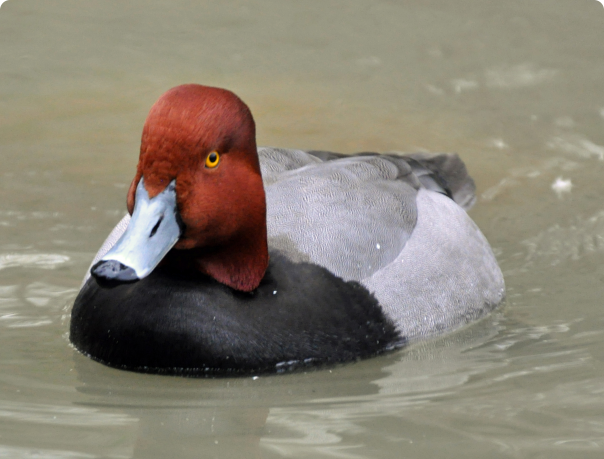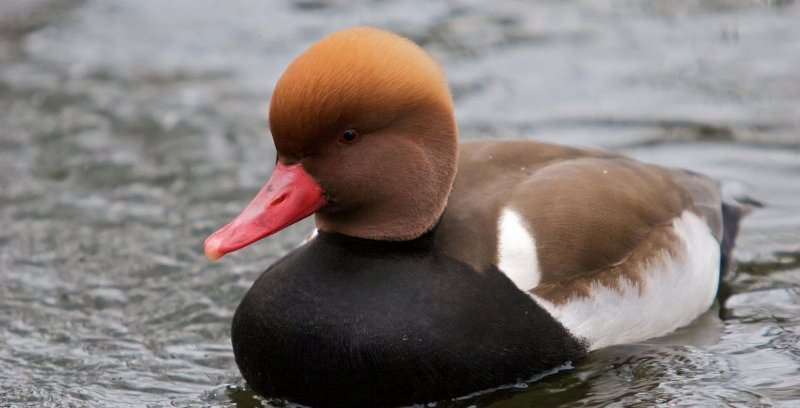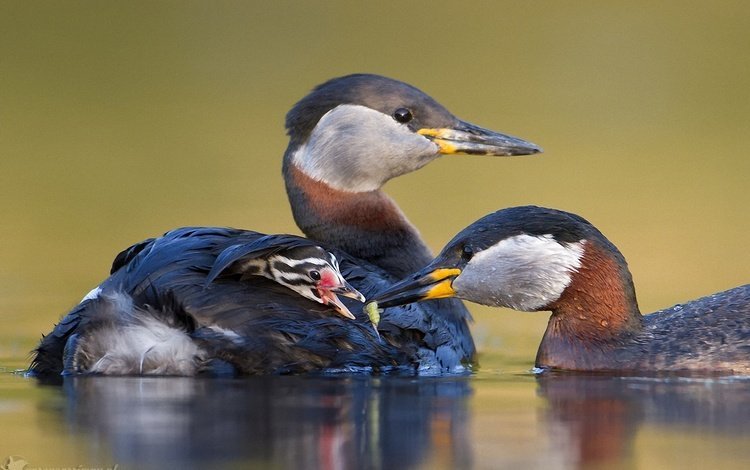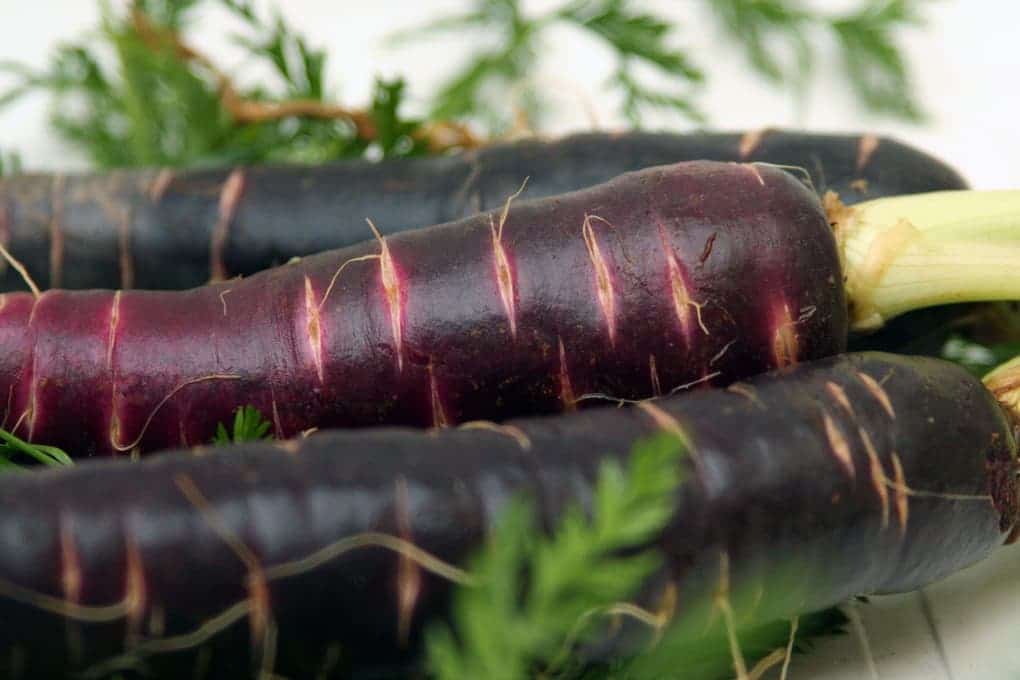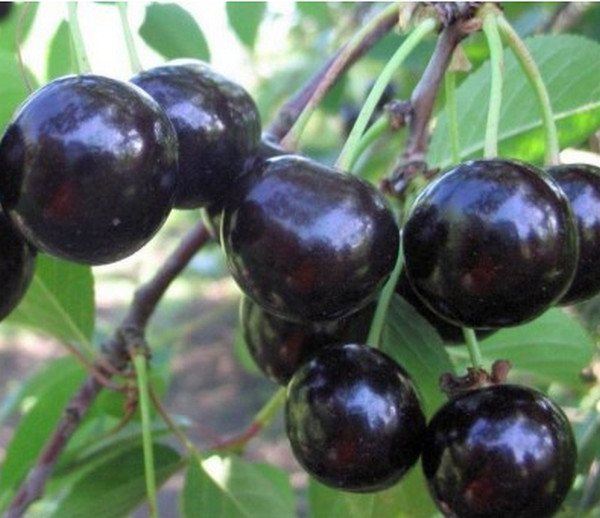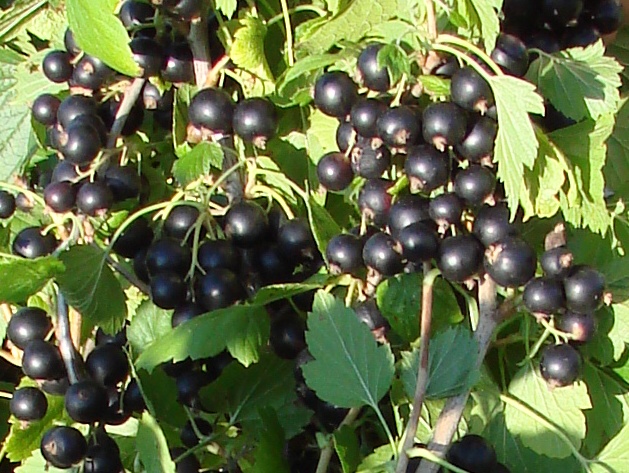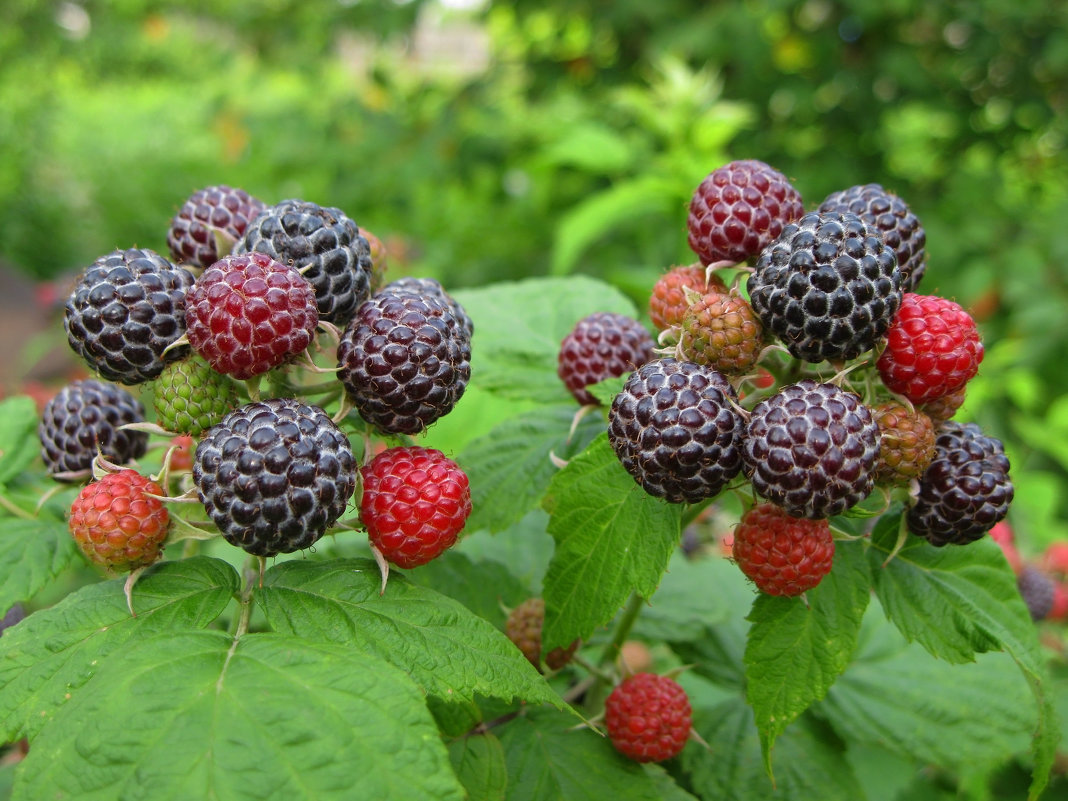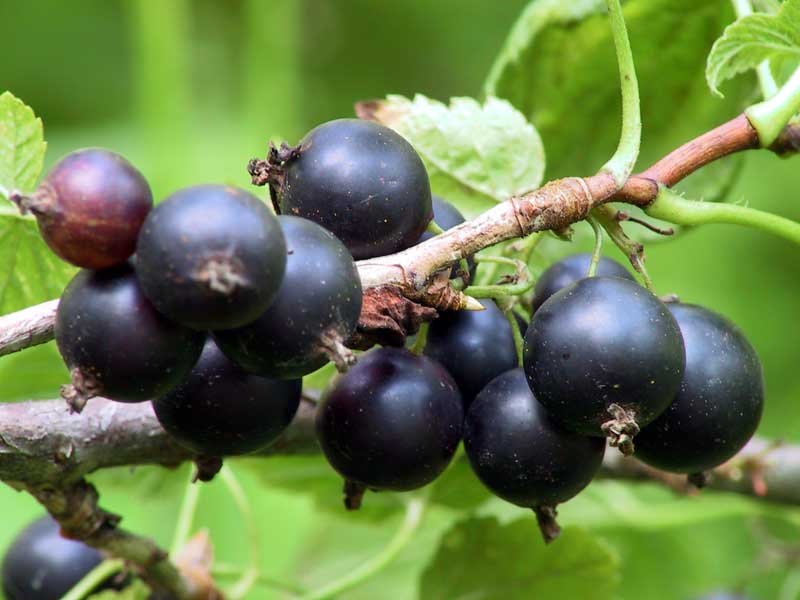There are several varieties of black duck breeds, each of which has its own external characteristics and biological characteristics. Each of the breeds has its own value.
Coot
The black duck, or Coot, is a small-sized bird that lives in the water, originating from shepherds. It has a bright, well-recognizable appearance: black color, white beak and a white leathery spot on the forehead. In addition to its recognized name, it also has other territorial nicknames: Kashkaldak and Kachkaldak.
There is a species of Coot, which lives exclusively in Morocco and Spain - crested, which has two red balls above the upper plate of leathery origin.
The ode feeds exclusively on herbaceous plants: hornwort, algae, etc.
The coot is usually the size of a medium duck. The length of the bird varies from 36 cm to 38 cm. Weight depends on age and reaches 0.5-1 kg, males can gain weight up to 1.5 kg.
A black duck with a white beak usually has a strong constitution, its body is flattened on the sides. The back, head and neck of the Coot are covered with black and dark gray plumage. The breast and abdomen of the duck are light gray in color, the beak is white, small, pointed and narrowed at the sides. A red iris is striking from afar. The tail of the black duck is short.
The differences between the female and the male are small here, the male is slightly larger than the female, somewhat darker in color, but with a more noticeable plaque on the forehead.
Sometimes there is a crossing of the breeds of the Lysukha and the nearby Kamyshnitsa. In this case, a hybrid brood is obtained, which inherits the characteristics of both breeds.
The sounds emitted by females and males are not only varied, but also significantly different. The female's voice is louder and louder than that of the male, which makes dull hissing sounds.
Black wild ducks settle near freshwater bodies of water or near lakes, estuaries with slightly salty water. During nesting, they move away from fast-flowing rivers to quieter places: thickets of reeds, sedges, etc. They hibernate in sea bays, lakes, and reservoirs.
Males and females usually build nests together. A female black duck can hatch two or three broods of 6-12 eggs in one season. She is a layer and a brood hen. Eggs are usually light grayish or clayey in color with small brownish or purple specks, hatched by female and male in turn. The incubation period is 22 days, after which black ducklings hatch.
However, until about two weeks, the ducklings are still unable to find their own food. Having already reached 65 days and further, chicks can fly and stray into a flock. Sexual maturity of such individuals occurs only in the next season.
The coot belongs to the meat and egg breed of wild ducks, this is its advantage, however, such a bird has not yet been taught to live at home.
Common gogol
There is another type of black duck, similar in appearance to the Lysukha - gogol duck. This black white-breasted duck is often found both on the Eurasian mainland and America. She is a bright representative of the duck family and reaches a length of 50 cm, weight 0.5-1.1 kg.
Gogol's habitat is forest areas, typical nesting places are hollows of trees growing along the banks of water bodies. Lays 5 to 13 eggs. Wintering is carried out on the shores of fresh water reservoirs.
Outwardly, Gogol is a robustly built duck 42-50 cm long, weighing from 0.5 to 1.2 kg.
The black duck feeds on small fish, worms, dragonflies, midges.
Gogol's beak is black, short, widened upward, the tip is pointed. The iris is yellow, the wings are black-brown. The legs of the gogol are orange, there are dark membranes on the legs that go all the way to the back toe.
The external appearance of the female is not so striking, unlike the male, gray-brown muted shades prevail in her color. The head is dark brownish with a white border around the neck. The iris is light yellow or white. From above, the body is covered with gray feathers, the abdomen is white. The wings are dark slate, with a white stripe on each. Her legs are as bright as those of the male, yellow.
The mating ceremonies are accompanied by the shrill sounds of the male, reminiscent of the human words “surprisezzzz, biizz”, and the female “burrrr”. Mating games are accompanied by whistling and flapping of wings, like all ducks.
Gogol reaches sexual maturity from the age of two; the black duck forms pairs in winter. They nest in the hollows of aspen, birch, pine at a height of 10-15 m. They can also nest in the holes of hares and the hollows of old logs. The female is both a hen and a laying hen, although there are cases when two females lay eggs in one nest. These eggs remain unhatched. And usually the female lays eggs in an amount from 8 to 13, begins to incubate them after laying the last egg for 29 days. Black and white ducklings are born, spend the first day in the nest, by the age of two weeks they already swim well in the lake and are able to get their own food. The ducklings acquire the ability to fly after two months.
In winter, Gogol's menu consists of invertebrates at the bottom of the reservoir and on algae, as well as mollusks and crustaceans, in summer - usually midges, bloodworms, dragonflies, worms, roots, edible parts of algae, etc.
Gogol is a wild duck, breeding such a bird at home is impossible. The value of poultry for obtaining large quantities of meat or eggs is very small.
Mallard
You should know what the green-headed duck is called - this is a common representative of the duck order of Anseriformes - Mallard. This is a well-known representative of the duck family, which became the progenitor of many breeds of domestic ducks.
The mallard has a large dense body 57-62 cm long, weight 1000-2000 g. The male has a bright green color of the head and neck, the breast and goiter are brown-brown, the back and belly are spotty-gray. The female mallard has a darker plumage, the abdomen is gray-brown with variegated longitudinal feathers.
Mallard's beak is rather wide, flattened along the edges. The color of the beak in the representatives of this breed is different: from light olive, gray to orange.
The mallard does not always fly over to wintering in warm regions, if the bird finds an ice-free body of water, it will overwinter there.
The voice of the female Mallard is a well-known quack, while the male reproduces hissing sounds. Courtship periods are accompanied by a loud whistle of the male.
Mallard occupies forest and forest-steppe zones, less often lives in mountains and desert areas. Occupies coastal reservoirs with fresh, semi-saline and salty water, does not like open areas and fast currents.During nesting periods, it settles in reeds or other thickets, wooded armholes of rivers, is not at all afraid of humans.
It feeds by straining the food captured in shallow water through the horny beak plates. Food consists of aquatic plants, invertebrates, molluscs, frogs. The mallard can often be seen in an upright position with its tail raised and its head lowered into the water, thus it gets food.
At the end of summer, birds fly to the mown fields of wheat, oats, rye. Such ducks molt twice: before and after breeding.
They begin to breed at the age of one year and older. The male aggressively guards the nest until the goslings hatch. The female covers the nest with fluff at the edges, the nest itself is constructed of soft grass.
Clutch of eggs begins in mid-April and lasts until the end of May.
Mallard eggs are light olive in color with a greenish tint; their number in the nest reaches 13 pcs. A quail incubates eggs from 22 to 28 days.
The hatched duckling is dark gray with an olive tint. Paws and beak are the same color. There is a pink marigold on its beak. The chick weighs 38-40 g, dries quickly and after 12 hours it independently gets out of the nest. He is already able to swim and dives skillfully.
The value of this breed lies in the large and quick weight gain, good and long egg production of the female. Breeding of this breed is also available at home.
Red-headed duck
One of the varieties of red-headed ducks. This is a diving duck that lives in the forest-steppe and in the southern parts of forests. She creates nests near open water bodies, is an object of hunting.
The Red-headed Duck is a medium-sized bird, much smaller than the Mallard: 42-49 cm long, weighing 450-1300g.
During the mating season, the drake has a bright red-brown color of the head and goiter, the breast and peri-tail area are black, the back and sides are light gray with transverse light stripes. The iris is red. The female has a gray-brown plumage with a gray pattern on the sides. The beak of the male and female is long, gray-bluish in the middle, black at the base and at the tip. The base of the beak is concave, the tip has a hook.
The dive generally does not emit loud cries: the male reproduces a small whistle, which suddenly turns into a nasal cry. From time to time publishes quiet "ki-ki", while the female wheezes "crrrr".
The legs of the red-headed duck are protruded back, so the bird walks heavily, waddling from one leg to another. In water it can be found next to tufted devils.
The bird is partially migratory, with the population of warm territories it remains there for the winter.
Forms nests from the first, sometimes - the second year. Dives occupy only lakes freed from ice for nesting in already formed pairs. The construction of the nest takes place in a special place - a raft, a coastal area overgrown with moss and grass. Nests are usually hidden in reed or sedge thickets, covered with female down.
The female duck begins to lay eggs from April-May to the required amount of 8-10 greenish-blue eggs. She is both an egg-laying and a brood hen. The female incubates eggs for 23-26 days. The chicks hatch very quickly and immediately follow their mother from the nest. They are covered with yellowish-olive thick down, and after two or three days they get their own food on their own. The plumage of chicks occurs after three weeks, although they read to fly after two months.
The diving diet is varied and depends on the season: in spring it is vegetation, in winter it is mollusks, worms, larvae, amphibians and small fish.
The red-headed duck is not adapted for domestic breeding, has a low weight and egg production relative to other black duck breeds. Breeding of this breed has no consumer benefit.
Gray-cheeked grebe
Gray-cheeked grebe belongs to the toadstool family, its size reaches the size of an average duck. The grebe has a long neck and is straight with a yellowish beak. It has a strong neck, the back of the head is decorated with a black tuft. Its length is 40-50 cm, weight - 650-950 g.
External differences between females and males are manifested in the great preponderance of the latter. The neck and upper part of the breast are reddish. The back of the cervical spine, back and wings have brown-black plumage. The iris of the eye is brownish red. It feeds on invertebrates, spiders and molluscs.
Having decided to breed black ducks, you should carefully study the properties of the breeds in order to make the right choice.
